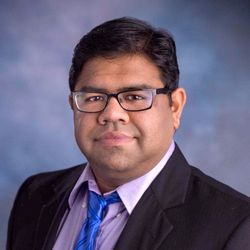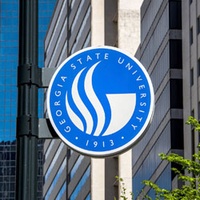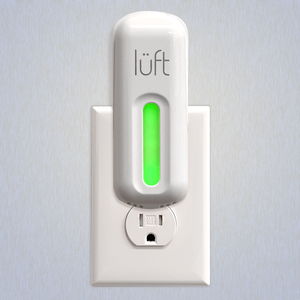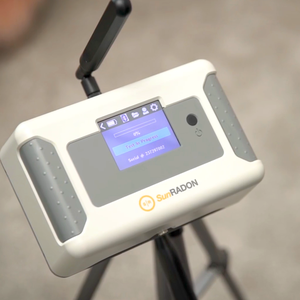The pairing of Georgia State University and SunRADON
Sometimes two great things come together to make something even better, like peanut butter and jelly, Batman and Robin, or macaroni and cheese. This story is about one of those great pairings.
It all started in 2021, when Georgia State University received a grant from the US Department of Agriculture (USDA) and National Science Foundation (NSF) through the program called Signals in the Soil (SitS). The program at Georgia State was focused on measuring radon within the soil, and providing underground radon modeling under the leadership of Dr. Ashwin Ashok, the Principal Investigator.
Why does this research matter?
As radon is the by-product of naturally occurring uranium decay, if an area has high intensity over time, radon can penetrate homes through tiniest cracks and crevices and accumulate indoors. Breathing in elevated levels of radon causes lung cancer. In fact, radon is the second leading cause of lung cancer just behind smoking!
For decades, building codes did not address radon. There were also no radon activity studies before building new homes, schools, or hospitals on ground with high activity. For the longest time, clusters of cancer occurrences were detected, even among non-smokers, but the reason was unknown. Because radon is colorless and odorless and is a slow killer, it was something that was difficult to identify and rarely researched as part of new development projects.
So the team of engineers, geologists, scientists, and educators at Georgia State saw a problem that lacked understanding in the scientific community, and decided to tackle it with a study of their own to shed light on an area that could potentially affect many lives. The core idea of the Georgia State team is to test and identify potential radon hot spots and possibly derive a prediction model of radon hot spots before developments are built on new ground.
 The first year they applied for the funding, they didn’t receive the grant. The second year, however, they received nearly double the original opportunity when the funding came through. “Things happen for a reason,” Dr. Ashok remarked when reflecting on the award.
The first year they applied for the funding, they didn’t receive the grant. The second year, however, they received nearly double the original opportunity when the funding came through. “Things happen for a reason,” Dr. Ashok remarked when reflecting on the award.
Dr. Kai Wundke, at SunRADON picked up on the story of what Dr. Ashok and Georgia State were doing and was the first person to reach out. Dr. Ashok was pleasantly surprised as they had not even started their project yet. He remembers thinking that maybe this was just another sales call, but it was clear that Dr. Wundke was looking to collaborate and was genuinely interested in the impact this study would have. Dr. Ashok remembers how enjoyable that first call was as two scientists spent time connecting—I’m sure the rest of us would need a science translator for that conversation!
 The team at Georgia State had just begun building a sensor suite using off-the-shelf components and then assembling them into what they needed to perform their studies and work. Dr. Ashok mentioned to Dr. Wundke that he would like to purchase two of SunRADON’s flagship devices, one lüft® and one 1028 XP with the LTE wireless upgrade option (their consumer and professional models, respectively) to see how those devices might fit into the research. To his surprise, Dr. Ashok received three samples of each at no charge, and they immediately started collecting data from these devices. They were off the races much faster than anticipated!
The team at Georgia State had just begun building a sensor suite using off-the-shelf components and then assembling them into what they needed to perform their studies and work. Dr. Ashok mentioned to Dr. Wundke that he would like to purchase two of SunRADON’s flagship devices, one lüft® and one 1028 XP with the LTE wireless upgrade option (their consumer and professional models, respectively) to see how those devices might fit into the research. To his surprise, Dr. Ashok received three samples of each at no charge, and they immediately started collecting data from these devices. They were off the races much faster than anticipated!
The radon sensor they were looking at originally was from a company in Germany (though it was manufactured in Korea), and Dr. Ashok had bought two, with the shipping taking two months, only to then receive the bad news that they were now out of stock and would have to go to the company in Korea to purchase it directly. By the time they reached out, that company had stopped selling the radon sensors. The sensor was now impossible to get!
At the same time, the testing with the devices he had received from SunRADON was going very well. The devices were ticking all the boxes. They were easy to install, they could be either connected via WiFi or via wireless LTE that enabled real time, remote monitoring, and they had all the sensors that were needed. He was getting readings on radon, volatile organic compounds (VOC), carbon dioxide equivalents as well as temperature, pressure, and humidity, which makes a complete environmental study possible. And even better, because SunRADON believed in the research, they gave Georgia State access to their brand new cloud product at no cost that enables remote device readout and data analysis and helps speed up the research.
After some consideration, Dr. Ashok decided that instead of assembling and building their own devices, testing them, troubleshooting, and perfecting them, it would be more cost effective to simply purchase a functioning product, like the devices SunRADON had provided.
He purchased 100 lüft devices to get the project moving forward and 15 more for local schools. As the study gained steam, he has since ordered 150 lüft devices and 30 of the 1028 XPs.
These devices have been deployed in one active test bed in Atlanta, about five feet underground. This test bed is at Stone Mountain (where 40 lüft devices are deployed with 36 at five feet, 2 at three feet and 3 on the surface) and data is collected 24/7. Another deployment of the same scale is envisioned for Arabia Mountain in Georgia and will be functional by summer 2023. The researchers are also currently working with high schools in the area and planning to distribute devices to about 10 more schools around metro and suburban Atlanta, where students can plot and review the data, giving them an understanding of radon and an introduction to meaningful science in action. The added bonus is the air quality in the classrooms is now being monitored every day!


Dr. Ashok considers the partnership with SunRADON and Dr. Wundke a blessing and he sees them as an active partner in collaboration. Likewise, Dr. Wundke appreciates the opportunity to make an impact into the study and says he gains valuable insight into ways to improve their products through the partnership.
Like all good pairings, like beer and schnitzel or wine and cheese (someone was hungry when they wrote this article), the pairing of Georgia State and SunRADON has resulted in an advancement of the understanding of radon and its effects. Here’s to great pairings!
Monitor your Air, Protect your Health
with Indoor Air Quality Monitoring Solutions from SunRADON
Discover our Solutions


